|
Welcome to The Food Historian's 31 Days of Halloween extravaganza. Between social media (Facebook, Instagram, Twitter) and this blog, I'll be sharing vintage Halloween content nearly every day this month! If you're a fan of Halloween and all things vintage, you've probably heard of Dennison's Bogie Books. Launched in 1909 by the Dennison paper products company, which specialized in crepe paper, the Bogie Books became hugely popular for their ideas for parties, costumes, and yes, menus. The idea of direct-to-consumer advertising was starting to take off in the 1900s, and certainly food companies were capitalizing on corporate cookbooklets at this time. But Dennison's was one of the first companies to issue what they called "instruction books," but which were more like idea books. Chock full of ideas for table crafts, games, costumes, decorating, party organizing, and menus, they were a one-stop shop for all things Halloween. Nearly all the ideas incorporated Dennison's products, which branched out from just black and orange crepe paper to more elaborate decorations, like printed paper tablecloths and napkins, paper plates, printed crepe paper "borders," die cut figures, and more. The popularity of Halloween parties exploded in the 1920s. Long popular among young adults looking for romance, postwar they shifted to include children and adults, too. Dennison's had been printing Art and Decoration in Crepe and Tissue Paper since 1894 (here's the 1917 edition, complete with colorful samples of crepe and tissue paper). But the 1909 Bogie Book was one of its first forays into a single holiday booklet, although others for Christmas, galas, and other holidays would follow in the 1920s. The Bogie Book, however, was the only one to be printed annually, and illustrates just how popular Halloween had become in the United States. Halloween DecorationsDennison's bread and butter was paper decorations and colored crepe paper. More than any other holiday except perhaps Christmas, decorations were an integral part of Halloween celebrations. Popularized in the late Victorian era, home Halloween parties were increasingly common in the 1910s and 1920s. Dressing up your living room (like below) and other more mundane parts of the house was crucial, and Dennison's promised loads of ideas for themes and instructions for making your own decorations, in addition to purchasing their ready-made stock. Halloween PartiesIn addition to parties at home, increasingly people were throwing more public parties. Halloween was traditionally a time for young love, and it was the perfect opportunity to get young people together. Public parties could be held in church basements, public halls, fraternal organizations, and schools. Bogie Books included hints not only in decorating these larger spaces, but also advice for spooky entrances, harmless tricks, and group games. Halloween CostumesOf course, what was a party without a costume? But Halloween costumes in the 1910s and 1920s were not much like today's. Although classic Halloween archetypes like witches, bats, pirates, pierrot and harlequin figures, and fortune tellers were popular for more obvious costumes, simply dressing in black and orange with spooky figures or motifs was enough for most people. The silhouettes of the day were largely maintained. Sometimes more abstract themes, like "Night" or "The Moon" or "A Star" might allow the fashionable young lady to put in a little more effort while still feeling pretty. In the above image, three young women feature variations on the same 1920s party dress silhouette - one is festooned with orange stripes and ribbons of crepe paper hang from her waist and festoon a hat, with jack-o'-lantern images bobbing at the ends of the streamers. Another is dressed as "The Moon" - with a large silver crescent moon on her head and a black dress and gray cape spangled with more crescent moons and stars - orange streamers hang from her waist. Another goes with a pumpkin theme - wearing an orange bodice with a dagged peplum, a black dress featuring orange jack-o'-lanterns, and long black sleeves with dagged cuffs and black ribbed cape with capelet and a huge stiff collar. Her ensemble is topped with a black cap featuring a festoon of orange leaves. A little girl is also pictured, wearing a black and orange dress featuring a black cat's face on the bodice and a black and orange cap with long ears or leaves protruding from the top. Alas, the men's costumes are less flattering - large, formless tunics and hats worn over their regular button-up shirts and ties. One is dressed as the moon - with the tunic featuring an enigmatic-looking full man-in-the-moon and a tall cone of a cap with another moon and stars. The other is dressed in a black-trimmed orange tunic featuring a large fringed black-and-orange collar and a smiling jack-o'-lantern as a pocket. He wears a witch's hat covered in small jack-'o-lanterns. Each Dennison's Bogie Book included instructions for making each of the pictured costumes from Dennison's crepe paper, printed paper figures, and more. Halloween MenusOf course, The Food Historian is going to be interested in the menus! Along with all their other suggestions, some issues of Dennison's included sample menus. Although not every Bogie Book contains menus, many do reference food and refreshments. Generally, the suggestions are simple and standard party fare - sandwiches, potato chips, potato salad, simple cakes, donuts, fruit, olives, cheese, nuts, etc. - and rarely are recipes included. The emphasis of the books is on decorating the food, tableware, and tables than the food itself. It took a while for the books to gain traction, and the 1909 one didn't get a sequel until 1912. But by then home parties for Halloween were becoming increasingly popular. And Dennison published Bogie Books annually from 1912-1935. Only war (1918) and the Great Depression (1932) stopped their publication. History of the Dennison Manufacturing CompanyThe Dennison Manufacturing Company has a long and interesting history, as it was largely controlled by one family for nearly 100 years. The Dennison company is still around today as Avery-Dennison. From the Hollis Archives, Harvard University, which holds the Dennison corporate collection: "The Dennison Manufacturing Company was a manufacturer of consumer paper products such as tags, labels, wrapping paper, crepe paper and greeting cards. The company was founded by Aaron L. Dennison and his father Andrew Dennison in Brunswick, Maine in 1844. Aaron Dennison, who was working in the Boston in the jewelry business, believed he could produce a better paper box than the imported boxes then on the market. The Dennison's first produced boxes made to house jewelry and watches. Aaron Dennison sold the boxes at his store in Boston, beginning in 1850 and in New York starting in 1854. After early business success, Aaron Dennison retired and yielded control of the company to his brother E.W. Dennison. "The mid to late 19th century saw numerous products introduced by E. W. Dennison, who improved the product so that it became the best and most sought after on the market and under the Dennison name. In order to grow the business, Dennison needed to mechanize the box making process. Dennison introduced the box machine to meet the growing demand of jewelers and watch makers, who began ordering large numbers of boxes. Until the introduction of the box machine, the boxes were still being made one at a time, by hand. The machine mechanized and sped up the box-making process. The company continued to expand, and a larger, centrally located factory was needed. Dennison chose Boston, Mass., as the site of the new factory in order to be close to the city's retail store. "In 1854, Dennison introduced card stock to hold jewelry and jewelry tags. Dennison's tags became wildly popular and the business began to expand rapidly, from the jewelry industry to textile manufacturers and retail merchants. E.W. Dennison noticed a deficiency in the quality of shipping tags and patented a paper washer that reinforced the hole in the tag. Sales of tags hit ten million in the first year. Stationery gummed labels were introduced just after the end of the Civil War. These labels had an adhesive on the back side and were manufactured to stick on boxes, crates or bags. The tag business alone required E.W. Dennison to move his factory in order to fulfill demand. The boxes, shipping tags, merchandise tags, labels and jeweler's cards were moved to the new factory in Roxbury in 1878. That same year the company was officially incorporated as the Dennison Manufacturing Company. "In just over thirty years, the company grew from a small jewelry box maker to a large manufacturer of paper products under the direction of E.W. Dennison and his partner and treasurer Albert Metcalf. Dennison died in 1886 and his son, Henry B. Dennison succeeded him as president of the company. Henry B. Dennison had worked for the company for many years, having opened the Chicago store in 1868 and served as superintendent of the factories since 1869. Henry B. Dennison served as president of the company for only six years and resigned due to poor health in 1892. Henry K. Dyer was then elected president, and under his direction the company consolidated its many factories and operations. In 1897, the Dennison Manufacturing Company purchased the Para Rubber Company plant located on the railroad line in Framingham, Mass. The box division was transferred from Brunswick, Maine; the wax and crepe paper operations from the Brooklyn, NY factory; and the labels and tags from the Roxbury plant. The move was complete in 1898 and the factory was up and running. The factory was divided into five manufacturing divisions: first, the jewelry line, which included boxes, cases, display trays; second, the consumers' line of shipping tags, gummed labels, baggage check and specialty paper items; third, the dealers' line which included all stock products sold to dealers and some consumers; fourth, the crepe paper line; and fifth, the holiday line. Also located at the Framingham plant were financial offices, advertising and marketing departments, sales division and director's offices. Although the company was divided into divisions, all aspects of the company worked together in unison to plan and execute the production, marketing, and sale of a product. The Dennison Mfg. Co. planned well in advance of any sale by conducting market research, reviewing past statistics and gauging future interest in products. "Henry Sturgis Dennison, grandson of the founder, began working for the family business after graduating from Harvard in 1899. He held various jobs at the company including foreman of the wax department and in the factory office. He was promoted to works-manager in 1906, director in 1909 and treasurer in 1912. In 1917, H.S. Dennison was elected president of the company. While serving as president of the company, H.S. Dennison oversaw the international expansion of the firm, consolidation and streamlining of certain processes and procedures, reduction in working hours, implementation of employee profit sharing plans, an unemployment fund and the creation of company wellness facilities. H.S. Dennison was heavily focused on getting the highest quality work out of each of his employees and eagerly sought their advice and suggestions for improving working conditions and manufacturing processes. He employed market analysis and research when venturing into a new sales territory or rolling out a new product. His focus on industrial management led him to be a prolific writer, speaker, and expert advisor on the topic. Outside of his management of the company, he served as an advisor to the administrations of Woodrow Wilson and Franklin Roosevelt and lectured at Harvard Business School. Henry Sturgis Dennison served as president of the Dennison Manufacturing Company until his death in 1952. "Dennison's long time director of research and vice president, John S. Keir, was elected to succeed him in 1952. Keir only served for a short time, and continued running the company the way Dennison would have. After World War II, an emphasis was placed on manufacturing products that appealed to women, especially housewives. New products included photo corners, picture hangers, stationery, scotch tape, diaper liners and school supply materials for children. During the 1960s and 1970s, the Dennison Manufacturing Company began actively researching new products and proposed acquiring small, competing office product companies with new technologies. This effort was undertaken by president Nelson S. Gifford in order to diversify Dennison's product line, maximize profits for shareholders, and keep the company fresh. In 1975, Dennison acquired the Carter's Ink Company, a Boston, Mass. based manufacturer of ink and writing utensils. This acquisition and others broadened Dennison's product line as the company moved away from paper manufacture to a manufacturer of all office products. "Dennison Manufacturing Company merged with Avery Products in 1990 to become, Avery-Dennison, a global manufacturer of pressure sensitive adhesive labels and packaging materials solutions." If you'd like to learn more about Dennison, check out the Harvard collection. For more about the history of the family and its products, check out this historical overview from the Framingham, Massachusetts History Center, which holds the Dennison family papers and other collections related to the company. Finding Dennison's Bogie BooksThe Bogie Books can be hard to find these days. They are collector's items and sadly often disappear from library and archival collections. However, several issues from the 1920s have been digitized and are available for free on disparate locations around the internet. I've collected them here for your viewing and reading pleasure. If you'd like to see the covers for 1912-1925, check out the list at Vintage Halloween Collector. Dennison's Bogie Book - 1919 edition Dennison's Bogie Book - 1920 edition Dennison's Bogie Book - 1922 edition Dennison's Bogie Book - 1923 edition Dennison's Bogie Book - 1924 edition Dennison's Bogie Book - 1925 edition Dennison's Bogie Book - 1926 edition Dennison's has also reproduced many of its historic Bogie Books and they are available for sale as print copies. You can find them on Amazon by clicking the links below. If you purchase anything from the links, you'll help support The Food Historian! What do you think? Are you inspired to try some vintage decorations for your Halloween party this year? In 2019 I threw my own version of A Very Vintage Halloween party - check it out! The Food Historian blog is supported by patrons on Patreon! Patrons help keep blog posts like this one free and available to the public. Join us for awesome members-only content like free digitized cookbooks from my personal collection, e-newsletter, and even snail mail from time to time! Don't like Patreon? Leave a tip!
2 Comments
Anna Katharine Mansfield
10/8/2022 10:55:50 am
I had to laugh at the costumes! As you pointed out, the ladies got detailed frocks, and the guys.... got.... shapeless sacks. :D
Reply
Hi — Great article about Dennison and Halloween! I did want to correct one thing — Dennison did publish pamphlets exclusively for Christmas and other holidays well before 1920. The pamphlets did turn more towards party ideas after 1920, but the earlier little books had lots of ideas and suggestions too.
Reply
Your comment will be posted after it is approved.
Leave a Reply. |
AuthorSarah Wassberg Johnson has an MA in Public History from the University at Albany and studies early 20th century food history. Archives
July 2024
Categories
All
|


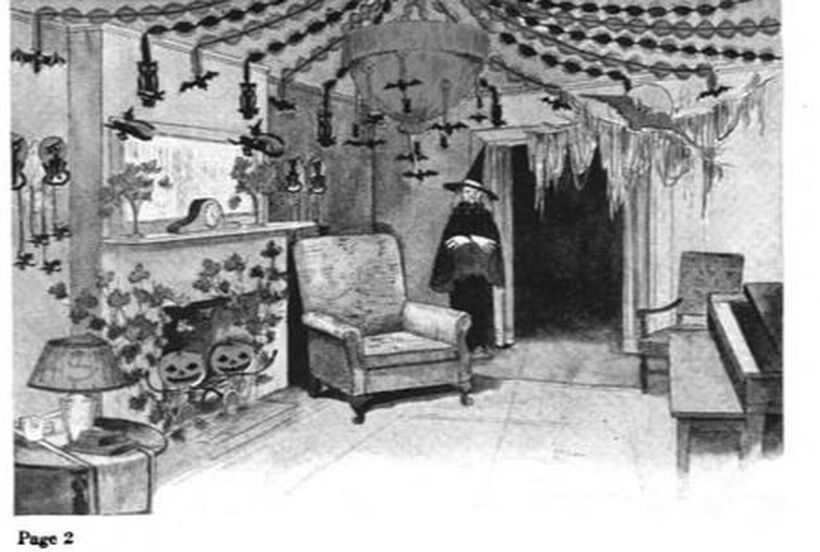
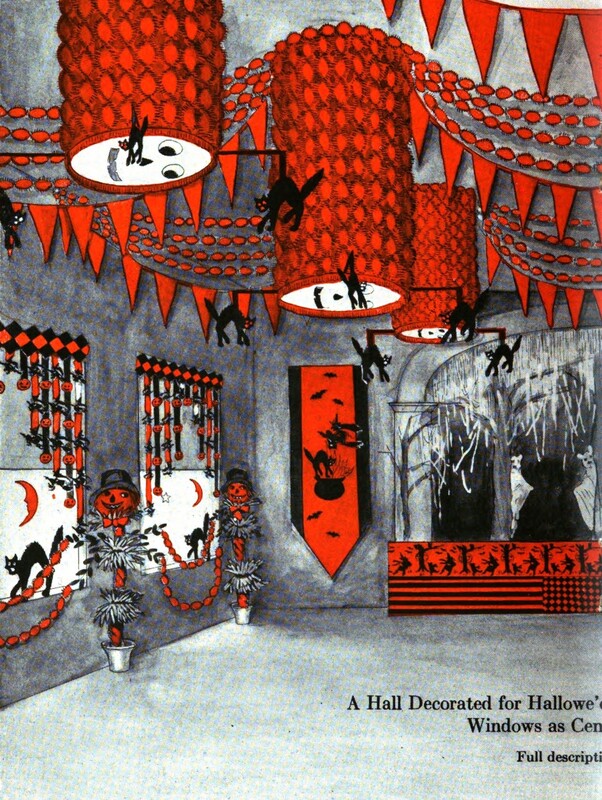
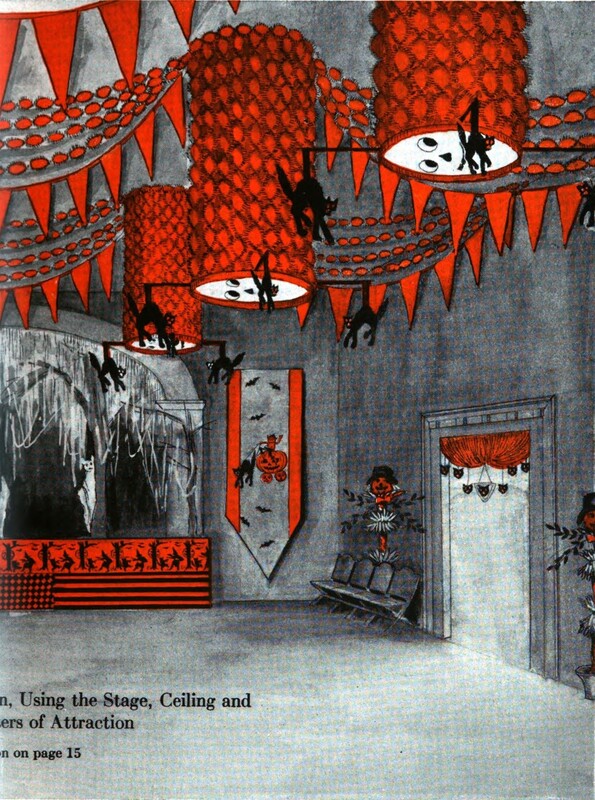
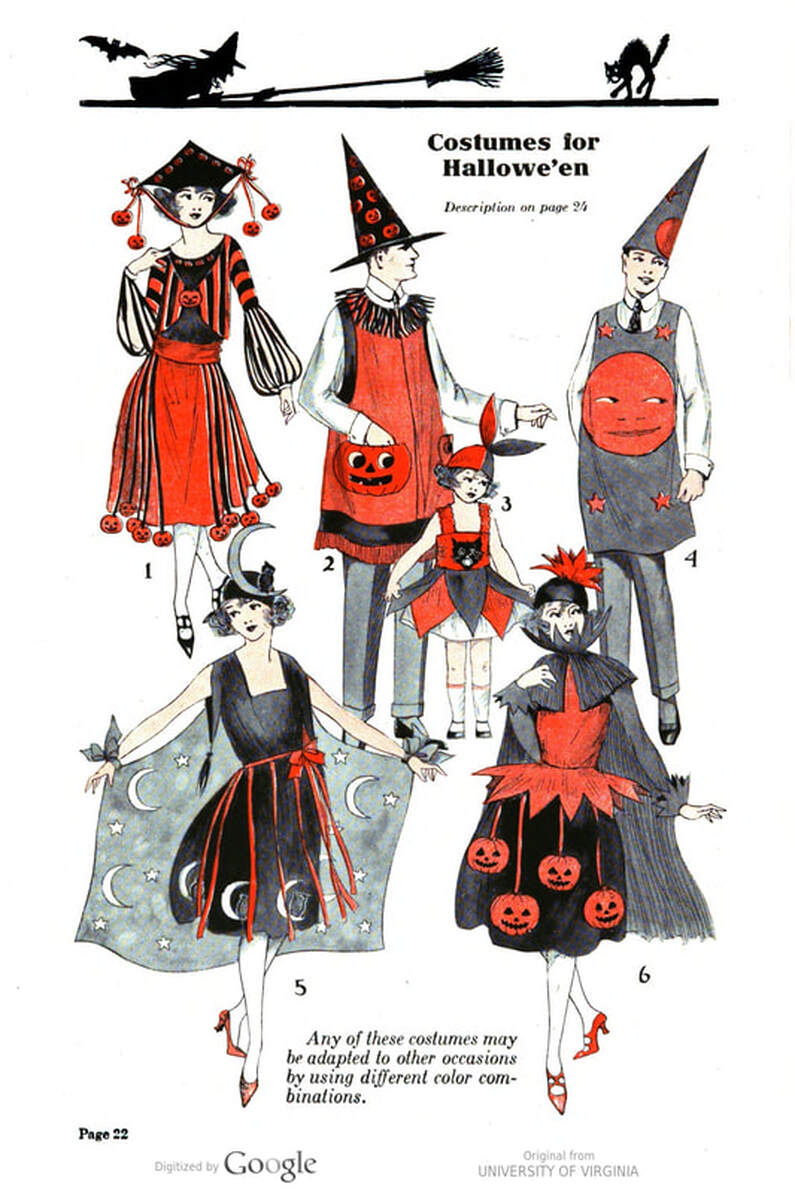


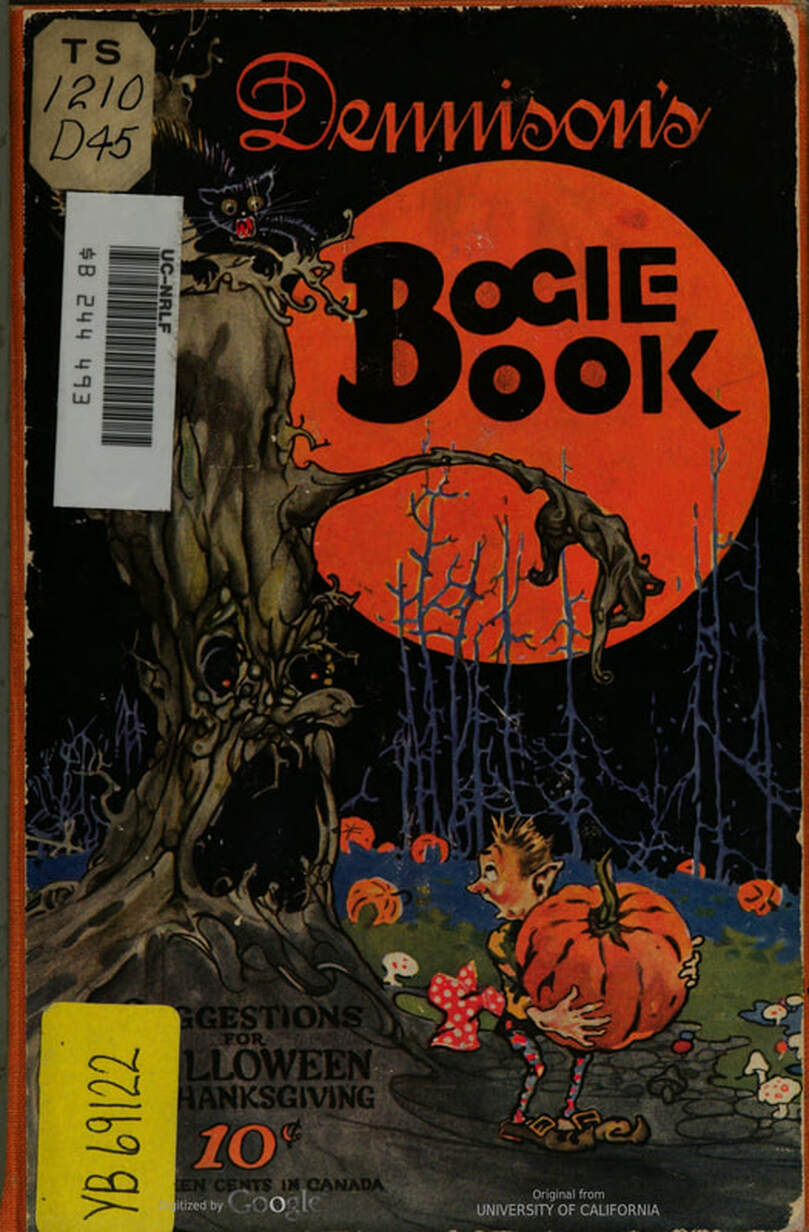

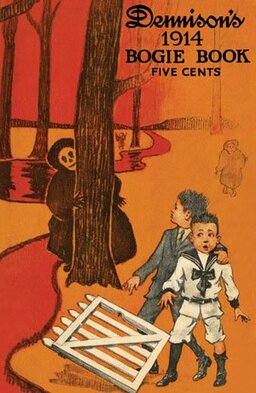



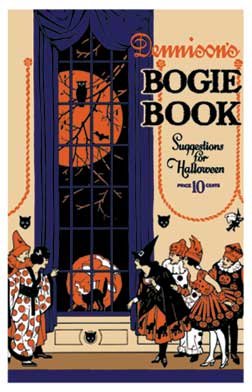
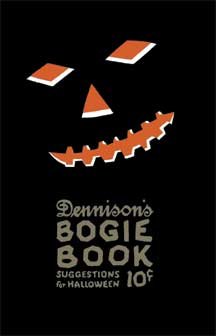

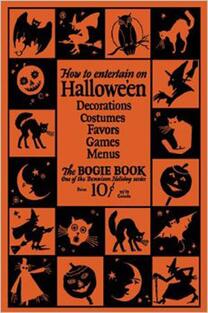


 RSS Feed
RSS Feed